Discover Islamic and Coptic Cairo in one day
Duration
1 Days
Destinations
Giza
Tour Availability
Every Day
Pickup Location
Cairo Airport or Hotel in Cairo
Tour Type
Private
About this tour
The itinerary: Day Tour to Coptic and Islamic Cairo
08:30 AM Our Egypt Tailor Made tour guide will escort you by an air conditioned vehicle to a new era “The Coptic Cairo” where you will visit
the “Hanging Church” which is dating back to the 3rd Century AD and was dedicated to Virgin Mary ,It’s called “Hanging” because of its location above the gatehouse of the ancient Roman fortress “Babylon” .It contains 110 Holy icons depicting beautiful religious scenes. Then visiting “Saint Sergius and
Bacchus Church” which is believed to have been built on the spot where the
holy family rested at the end of their journey into Egypt.
Then heading the marvelous Coptic buildings in Cairo, The Monastery of St. Simon the Tanner or “The Cave Church” which is located in el Mokattam hills area near the Zabbaleen slum or Garbage City which is Cairo’s largest informal garbage collectors settlement, where garbage recycling is central to its population’s economy. The Monastery of St. Simon the Tanner is the largest and it has an amphitheater with a seating capacity of 20,000.This church is the largest church in the Middle East. It is named after
the Coptic Saint, Simon the Tanner, who lived at the end of the 10th century and is associated with the legend of the moving of the Mokattam Mountain. The Monastery of St. Simon the Tanner include the St. Bola’s Church, St. Marks Church, and St. Simon the Tanner’s Hall.
Then heading to visit Islamic Cairo starting with visiting El Moez Street which starts at the northern Bab El Fotouh (one of the original gates to the old walled city), then meanders south for a bit until it intersects with Al Azhar street. Cross Al Azhar, and El Moez continues through the El Ghouri Complex (El Ghoureya in Arabic), ending at Bab Zuweila and the Tentmakers’ Market in the south.
Firstly we will visit Bab El Fotouh which is one of the last three remaining gates to the original walled city of Cairo, built by a Fatimid caliph. It has arrow slits and shafts for pouring boiling water or oil on attackers.
Then visiting
minarets are the oldest surviving minarets in Cairo. During certain periods after its construction during the Fatimid dynasty, it was used as a prison for Latin Crusaders, a fortress for Napoleon and a school before returning to its original function as a mosque.
Then visiting Mosque-Sabil of Sulayman Agha Al-Silahdar, This religious complex of Sulayman Agha Al-Silahdar is a mosque, sabil (a building with the purpose of providing free drinking water to the public) and kuttab (a religious elementary school). Its design is known as ‘Ottoman baroque’.
Al Hakim Mosque, short for Al-Hakim Bi-Amr Allah. Its
Al Aqmar Mosque
Translating to ‘Moonlit Mosque’, this
Then visiting ,
mosque served the residents of early Cairo as well as the Great Fatimid Palace (no longer standing). It was the earliest mosque to have such an elaborate exterior facade and decoration.
Then visiting Mosque-Madrassa of Sultan Barquq, This religious complex was built by the Mamluk Sultan Al Zaher Barquq and houses not only a mosque but a ‘madrassa’ — a religious school dedicated to the four Islamic schools of thought. It’s adjacent to the madrassa of Al Nassir Mohamed, an earlier sultan. These two structures are thought to be some of the greatest Mamluk architecture in Cairo, alongside the Qalawun Complex (below).
Then visiting Al Muayyad Mosque, Close to Bab Zuweila, the Al Muayyad
Mosque is considered the last great hypostyle mosque in Cairo. The interiors
of the mosque were some of the most richly decorated at the time, although it’s said that some pieces were illegally taken from other mosques; Al Muayyad Mosque’s door and chandelier is said to come from the famous Sultan Hassan mosque.
Then heading to Tentmakers’ Market (El Khayemeya) A covered market (one of Cairo’s very last) selling all different kinds of beautiful textiles: carpets, pillow cases, tapestries and colorful tent material that’s used all over Egypt in mosques, weddings, homes and holidays. The market itself is a small alley with a high roof with skylights for sunlight and ventilation. The goods sold at the different stalls are great examples of Egyptian handicrafts, and are super reasonably priced.
After finishing the tour you will be picked up back to your hotel in Cairo.
Included/Excluded
- Egyptologist tour guide speaking English.
- Air Conditioned Private vehicle
- 01 Day Tours
- Main Entrance Fees
- Bottled Mineral Water
- Tourism Police Permission
- Tax
- Accommodation
- Meals or Drinks or Beverages during the tours
- Any airport transfers
- Tipping
- Anything not mentioned above
Tour Plan
The itinerary: Day Tour to Coptic and Islamic Cairo
08:30 AM Our Egypt Tailor Made tour guide will escort you by an air conditioned vehicle to a new era "The Coptic Cairo" where you will visit
the "Hanging Church" which is dating back to the 3rd Century AD and was dedicated to Virgin Mary ,It's called "Hanging" because of its location above the gatehouse of the ancient Roman fortress "Babylon" .It contains 110 Holy icons depicting beautiful religious scenes. Then visiting "Saint Sergius and
Bacchus Church" which is believed to have been built on the spot where the
holy family rested at the end of their journey into Egypt.
Then heading the marvelous Coptic buildings in Cairo, The Monastery of St. Simon the Tanner or “The Cave Church” which is located in el Mokattam hills area near the Zabbaleen slum or Garbage City which is Cairo's largest informal garbage collectors settlement, where garbage recycling is central to its population's economy. The Monastery of St. Simon the Tanner is the largest and it has an amphitheater with a seating capacity of 20,000.This church is the largest church in the Middle East. It is named after
the Coptic Saint, Simon the Tanner, who lived at the end of the 10th century and is associated with the legend of the moving of the Mokattam Mountain. The Monastery of St. Simon the Tanner include the St. Bola's Church, St. Marks Church, and St. Simon the Tanner's Hall.
Then heading to visit Islamic Cairo starting with visiting El Moez Street which starts at the northern Bab El Fotouh (one of the original gates to the old walled city), then meanders south for a bit until it intersects with Al Azhar street. Cross Al Azhar, and El Moez continues through the El Ghouri Complex (El Ghoureya in Arabic), ending at Bab Zuweila and the Tentmakers’ Market in the south.
Firstly we will visit Bab El Fotouh which is one of the last three remaining gates to the original walled city of Cairo, built by a Fatimid caliph. It has arrow slits and shafts for pouring boiling water or oil on attackers.
Then visiting
minarets are the oldest surviving minarets in Cairo. During certain periods after its construction during the Fatimid dynasty, it was used as a prison for Latin Crusaders, a fortress for Napoleon and a school before returning to its original function as a mosque.
Then visiting Mosque-Sabil of Sulayman Agha Al-Silahdar, This religious complex of Sulayman Agha Al-Silahdar is a mosque, sabil (a building with the purpose of providing free drinking water to the public) and kuttab (a religious elementary school). Its design is known as ‘Ottoman baroque’.
Al Hakim Mosque, short for Al-Hakim Bi-Amr Allah. Its
Al Aqmar Mosque
Translating to ‘Moonlit Mosque’, this
Then visiting ,
mosque served the residents of early Cairo as well as the Great Fatimid Palace (no longer standing). It was the earliest mosque to have such an elaborate exterior facade and decoration.
Then visiting Mosque-Madrassa of Sultan Barquq, This religious complex was built by the Mamluk Sultan Al Zaher Barquq and houses not only a mosque but a ‘madrassa’ -- a religious school dedicated to the four Islamic schools of thought. It’s adjacent to the madrassa of Al Nassir Mohamed, an earlier sultan. These two structures are thought to be some of the greatest Mamluk architecture in Cairo, alongside the Qalawun Complex (below).
Then visiting Al Muayyad Mosque, Close to Bab Zuweila, the Al Muayyad
Mosque is considered the last great hypostyle mosque in Cairo. The interiors
of the mosque were some of the most richly decorated at the time, although it’s said that some pieces were illegally taken from other mosques; Al Muayyad Mosque’s door and chandelier is said to come from the famous Sultan Hassan mosque.
Then heading to Tentmakers’ Market (El Khayemeya) A covered market (one of Cairo’s very last) selling all different kinds of beautiful textiles: carpets, pillow cases, tapestries and colorful tent material that’s used all over Egypt in mosques, weddings, homes and holidays. The market itself is a small alley with a high roof with skylights for sunlight and ventilation. The goods sold at the different stalls are great examples of Egyptian handicrafts, and are super reasonably priced.
After finishing the tour you will be picked up back to your hotel in Cairo.


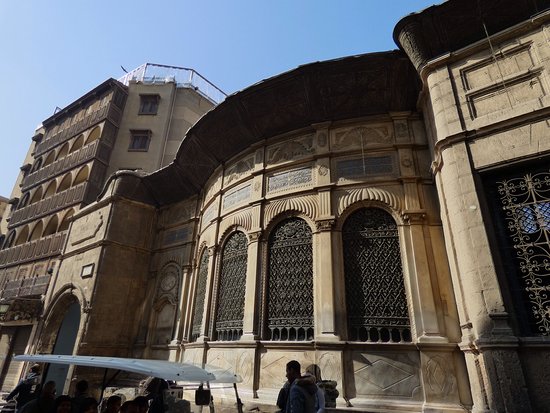
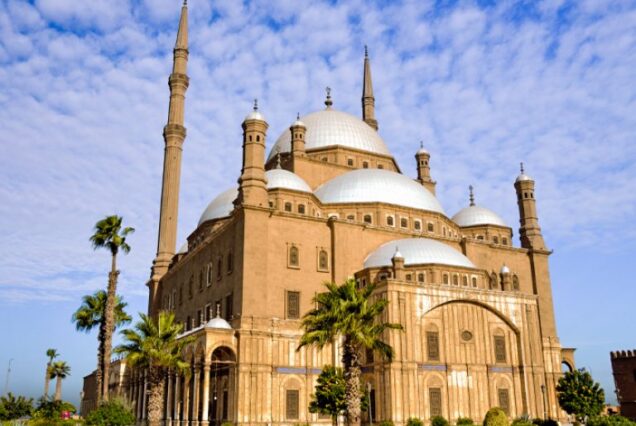
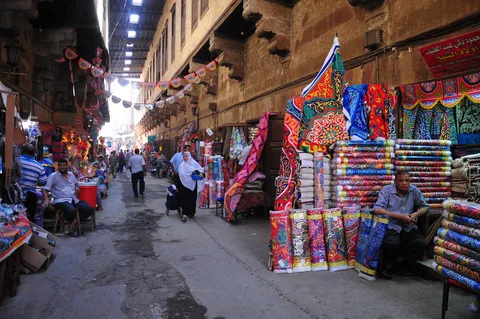
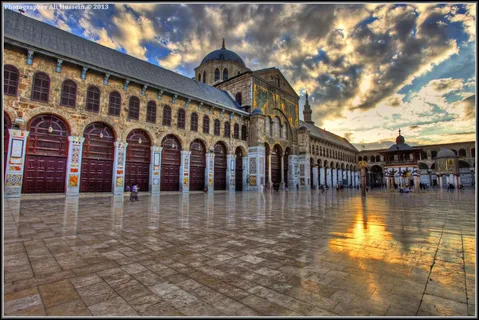
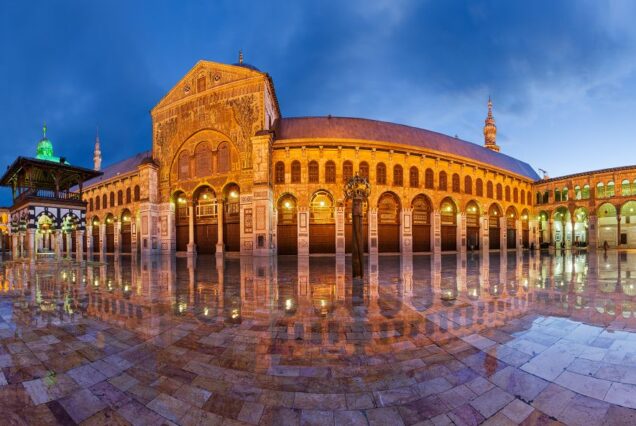
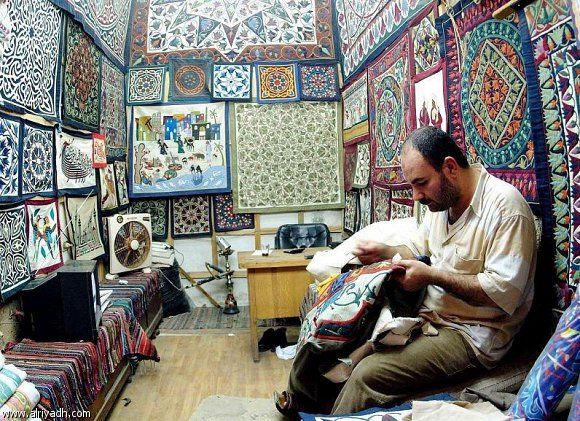









Elaine –
hgh tabletten kaufen
References:
bbs.yhmoli.net
Audrey –
do steroids help you lose weight
References:
liquid steroids for sale (Motionentrance.Edu.np)
Ralf –
As we navigate the riveting landscape of bodybuilding, it’s clear that Anavar, also called Oxandrolone,
is often a vital ally. With its versatility and apparent mild touch
in comparability with other steroids, it’s evident why both women and men adopt it to enhance their health progress.
Selecting to create a dynamic duo, or even a trio, of steroids in a stack is an effective method to
extract one of the best outcomes. Nevertheless, it’s essential to display screen your potential companions,
as not each steroid is suitable to stack with Anavar,
particularly when the primary aim is cutting. Anavar for girls
is a powerful ally within the pursuit of an ideal physique, however only when wielded with knowledge and intent.
As an intermediate Anavar consumer, the dosage might
be slightly greater than the beginners’ dose.
A typical range lies between 50 to a hundred milligrams per day, once more relying on an individual’s specific needs and tolerance ranges.
By avoiding the stronger, water-retaining, or liver-toxic compounds, you ensure a
stack that works harmoniously towards your aim of a lean, well-defined physique.
Finally, for well-versed, seasoned bodybuilders, an advanced Anavar cycle could entail the next dosage – doubtlessly 80
to one hundred milligrams a day – to carve that chiseled look.
At this point, Anavar will often be combined
with other compounds for a holistic vary of benefits.
Nevertheless, mindfully rising dosages, listening to
your body’s cues, and keeping the cycle length in a safe range remain paramount, regardless of your bodybuilding expertise.
Sourcing uncooked anabolic material can be daunting, but with the best
data and precautions, you can find respected suppliers who supply high-quality products for sale.
When it comes to optimizing your Anavar dosage for desired results, discovering the candy
spot is essential. With the assistance of the Reddit group,
we’ve gathered some priceless insights to guide you in maximizing the advantages of this well-liked steroid.
4-8 weeks of var is much simpler, you’re not gonna be shut down after four weeks
(just suppressed) , you don’t want an AI, no pinning, you won’t want a pct.
He is a biologist and a chemist and has been coaching athletes for a quantity of years.
I uploaded the video the place he recommends anavar right here,
since it isn’t public. I obtained pretty bloated, which lasted 6
weeks, however the last two weeks have been better.
Not having to cope with water retention is a aid for anybody
wanting to attain a shredded, exhausting,
and vascular physique. How much physique fat can be misplaced is decided by
your current physique composition; Anavar shouldn’t be thought of a magic
weight reduction capsule. Anavar’s actual worth exists the place you’re already
lean and the place Anavar’s hardening and drying physique can exhibit these previous couple of percentages of
fats you’ve shed. Would advocate to anybody who’s gunning for a recomp with not too critical sides.
These weeks were principally a reduce however I am fairly sure I placed
on quite an quantity of muscle as properly, just based
on how I look and feel.
Masteron is ideal for operating for a whole cycle, whereas Anavar is best used as a ending steroid within the final weeks.
Just as with Winstrol, Masteron usually ends in a better level of vascularity and a
grainer look than Anavar does. It comes with some advantages over Anavar, but ultimately,
your objectives will be the determination maker on which
to choose. Masteron is an injectable steroid, and it’s
the safer one to use for longer cycles.
The Journal of clinical endocrinology and metabolism, 64(5), 960–963.
Nonetheless, if an individual predominantly wants to burn fat on Anavar,
then a small calorie deficit could be carried out to speed up fat loss while aiding muscle retention. Cardiovascular exercise, or HIIT (high-intensity interval
training), can also be utilized to speed up a user’s metabolism while providing
cardiac advantages. Most anabolic steroids bought on the black
market are UGL (underground laboratories). This is essentially produced in a non-certified laboratory and poses a excessive threat to the buyer, as there aren’t any regulations in place
to ensure product safety.
A testosterone ester must also be included in an intermediate cycle, and again, the dosage will depend
on what you’re trying to achieve and whether
or not it is a hardcore slicing cycle. Trenbolone and Anavar could be stacked collectively throughout bulking or cutting cycles, resulting in appreciable fat
loss and super gains in muscle mass. Nonetheless, as a result of presence of trenbolone, we think about this to be a harsh cycle and not appropriate for novices.
Anavar’s benefits are not overly highly effective, a minimum
of in comparability with other anabolic steroids; due
to this fact, the side effects are more tolerable for many users.
Thus, the risk-reward ratio on Anavar is optimistic for the
majority of our patients. Our goal is to create an in-depth background of performance enhancing medication from each background whereas constructing a neighborhood around dialogue of these substances.
On the downside, Tren can negatively impression your cardio performance and hamper your fat loss efforts.
This stack will take dryness and muscle hardness to a model new level in comparability with Anavar alone.
R/SteroidGuide is a comprehensive subreddit devoted to providing
correct and detailed information about anabolic steroids and different performance-enhancing drugs.
It is a neighborhood where individuals can discuss, share, and study in regards to
the responsible use of such substances, together with their advantages, risks,
and proper cycles. The subreddit strongly encourages secure practices and does not condone
the unlawful or irresponsible use of steroids. There is a common notion that girls do not require post-cycle therapy.
At All Times consult with a professional healthcare provider before
starting or adjusting any Anavar dosage regimen. With correct steerage and monitoring, you presumably can strike the best balance between features and unwanted effects to optimize your Anavar cycle.
Remember, it’s all the time beneficial to seek the advice
of with a healthcare skilled or an skilled steroid person earlier than beginning any Anavar cycle.
Every individual’s response to the compound could differ, and their guidance might
help ensure your security and the effectiveness of your dosage.
When it involves decoding Anavar dosage on Reddit, there’s no shortage of useful insights from actual customers.
We have found that DHT-related unwanted side effects are largely decided by genetics.
Thus, some individuals could expertise vital hair loss from a low dose of
Anavar. While others may experience no hair loss whereas taking
high doses of trenbolone. Moreover, water retention is
unlikely on Anavar, with the compound making a dry and
defined look. This diuretic effect can also be more probably to improve vascularity and muscle striations whereas
contributing to a leaner look. About to do my third cycle
of 500mg of take a look at e pw and have decided to add in Anavar for the
primary time. I’ve learn that because of the 8hr half life lots of people
break up the dosage twice a day eight hours or so aside is that what happens when you use steroids you would all recommend?
Arleen –
does larry wheels take steroids
References:
http://www.google.fm